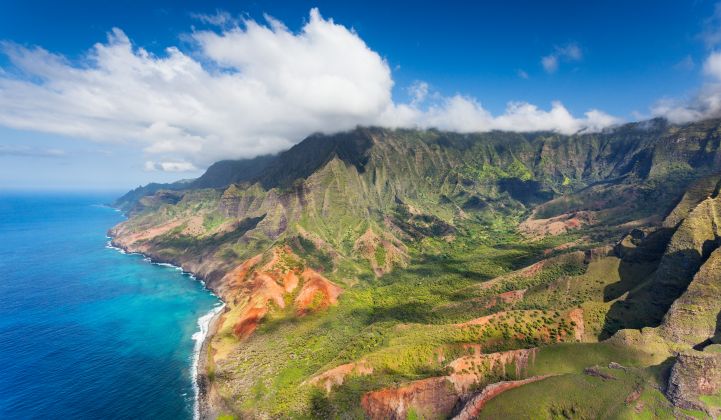In many places, it's still up for debate whether a battery project will pencil out economically. On island grids, though, storage already offers a slam-dunk when paired with solar PV to offer firmed power, said Lyndon Rive, co-founder of SolarCity, now known as president for global sales and service at Tesla's energy division.
"It makes perfect sense to convert every island out there right now to solar and storage," Rive told the crowd at the Energy Storage Association's conference in Denver Wednesday. "We are doing that."
The SolarCity founder made the case that isolated island grids, which largely rely on imported diesel for power, stand to gain immediately from a firmed solar retrofit.
The profitability of solar power varies widely on land, based on factors such as solar resource and local cost of electricity. It's harder to sell a solar project in a place where the conventional plants offer cheaper power.
On islands, the conventional grid costs a lot more. Most islands lack native fuel sources, so anything burned to create electricity has to be shipped in -- burning fuel in order to burn more fuel. The limited reach of the island cuts off opportunities to buy or sell power to neighbors when necessary.
Those fundamentals have driven several notable island projects already.
Tesla and SolarCity teamed up in 2015 to contract a project in Kauai that combines 13 megawatts of solar generation with a 52 megawatt-hour battery.
Completed in March, the project sells dispatchable power to the Kauai Island Utility Cooperative (KIUC) in a 20-year PPA at 13.9 cents per kilowatt-hour, cheaper than what the utility pays for conventional diesel fuel. The project also serves Hawaii's political goal of achieving 100 percent renewable electricity by 2045.
AES followed up with an even bigger and cheaper Kauai solar-plus-storage project announced in January. When it's completed in late 2018, that site will leverage 28 megawatts of solar photovoltaic capacity with 20-megawatt, 5-hour-duration batteries. And it will sell to KIUC at 11 cents per kilowatt-hour.
In November, Tesla built a solar-plus-storage array for the small community on Ta'u in American Samoa, converting the island from full diesel power to full solar power.
Storage on islands has already succeeded in these and other cases, giving residents cheaper power but also reducing air pollution and economic dependence on fuel imports. But that still leaves hundreds of islands as yet untapped by the industry. If Rive is correct -- and the numbers seem to bear him out -- that will soon change.
"We don't see inflection points so often, and last year was the inflection point for solar and storage in any market that uses diesel," Rive said.
Just because the economics work on paper, though, doesn't mean reaching this market will be easy.
If customer acquisition on land is hard, executing it on the myriad remote islands scattered across the seas will be devilishly difficult. Once contracted, getting the equipment there takes a voyage, and, depending on geography, the design may have to account for extreme weather and humidity.
The attractive economics of solar-plus-storage for islands won't bear fruit without considerable sweat on the part of storage providers. But for those willing to cross the seas, a bounty awaits.
Learn more about solar-plus-storage at GTM's 10th Annual Solar Summit in Arizona May 17-18. We’ve got the biggest names in the solar industry confirmed to attend and speak. And we've got a packed agenda of topics including solar software, energy storage, finance, community solar, corporate procurement, balance of systems, and much more. Check out the event site here.



